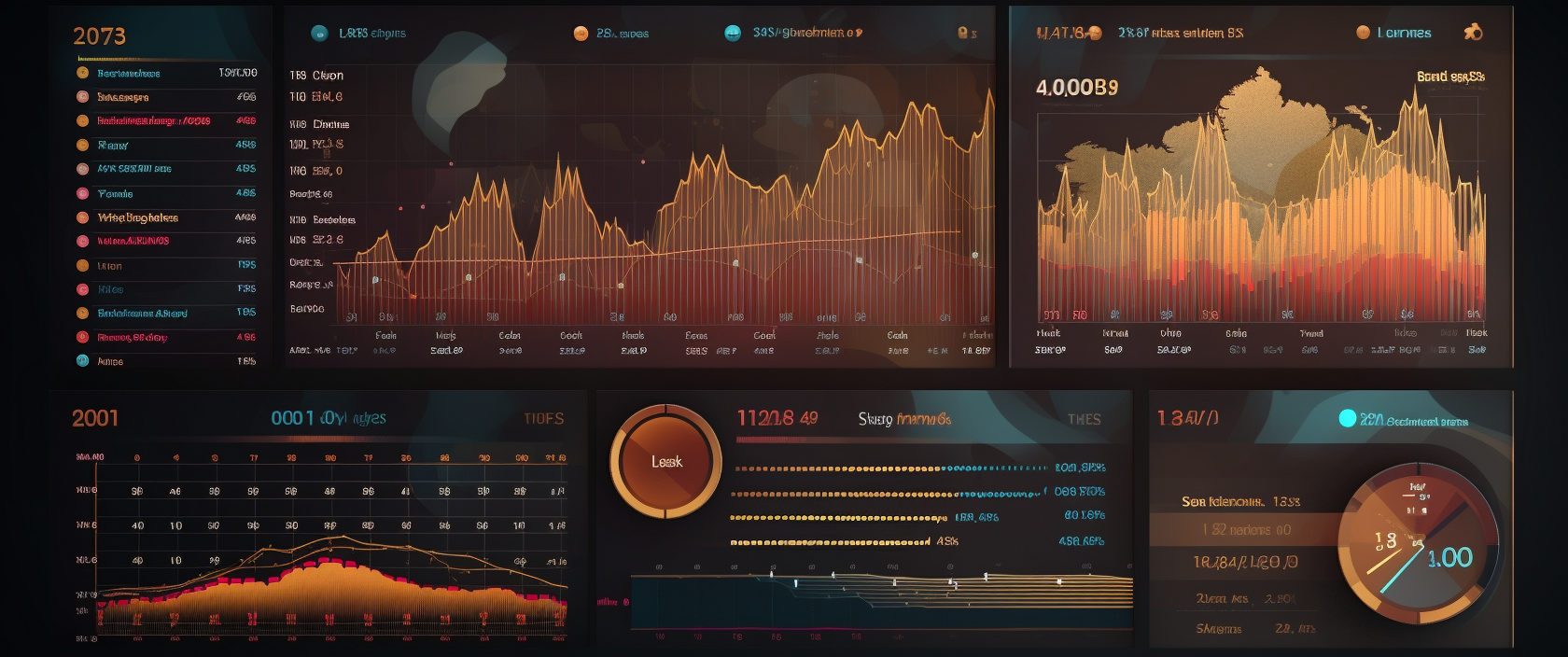Page speed plays a crucial role in digital marketplaces, directly impacting conversion rates and revenue. Even a one-second delay in page load time can result in a 7% decrease in conversions. Prioritizing page speed optimization is essential for businesses to enhance user experience, drive sales, and stay competitive.
Key Findings:
- 1-second delay: 7% reduction in conversions
- 3-second delay: 20% reduction in conversions
- > 3 seconds: 53% of mobile users abandon the page
Benefits of Fast Page Speed:
- Increased sales and conversions
- Improved user engagement and satisfaction
- Enhanced brand loyalty and trust
Optimization Strategies:
- Optimize media (images, videos) and code (minification, compression)
- Leverage Content Delivery Networks (CDNs) to reduce latency
- Implement responsive design for optimal mobile experience
By prioritizing page speed optimization, businesses can create a seamless user experience, drive conversions, and fuel revenue growth in the competitive digital landscape.
Quick Comparison: Page Load Time Impact on Conversions
| Load Time | Conversion Rate Impact |
|---|---|
| 1 second | 7% decrease |
| 3 seconds | 20% decrease |
| > 3 seconds | 53% of mobile users abandon |
Data on Page Speed and Conversion Rates
This section explores the relationship between website loading speed and conversion rates, providing statistics to support the direct correlation and the negative effects of delays.
User Abandonment and Load Time Benchmarks
Studies have consistently shown that user abandonment rates increase dramatically as page load times slow down. The data below highlights the importance of optimizing page speed for improved conversions.
| Load Time | Conversion Rate |
|---|---|
| 1 second | 2% increase (Walmart study) |
| 1 second | 3 times higher (Portent study) |
| 5 seconds | Lower conversion rate (Portent study) |
Load Times and Bounce Rates
The impact of page loading times on bounce rates is equally significant. The data below underscores the critical threshold where drop-offs increase significantly, emphasizing the need for businesses to prioritize page speed optimization.
| Load Time Delay | Effect on Conversions |
|---|---|
| 1 second | 7% decrease |
| 3 seconds | 20% decrease |
| > 3 seconds | 53% of mobile users abandon the page |
By understanding the direct correlation between page speed and conversion rates, businesses can take steps to optimize their website's loading times and improve their bottom line.
Other Factors Impacting Conversion Rates
This section explores the additional factors that contribute to decreased user interaction and lower conversion rates when page speed is slow.
User Experience and Page Speed
A slow-loading website can significantly compromise user experience, leading to frustration and mistrust. When a website takes too long to load, users are more likely to leave, resulting in lower conversion rates.
| Load Time Delay | Effect on Conversions |
|---|---|
| 1 second | 7% decrease |
| 3 seconds | 20% decrease |
| > 3 seconds | 53% of mobile users abandon the page |
By prioritizing page speed optimization, businesses can increase user engagement, build trust, and ultimately, drive conversions.
Page Speed and Brand Loyalty
The impact of page speed on brand loyalty cannot be overstated. A slow website can lead to a negative user experience, causing customers to question a brand's credibility and reliability.
The Consequences of Slow Page Speed on Brand Loyalty:
- Negative user experience
- Questioned credibility and reliability
- Decreased brand loyalty
On the other hand, a fast and responsive website can foster trust, loyalty, and repeat business.
Optimizing Mobile Pages for Users
With the majority of users accessing websites through mobile devices, optimizing mobile pages is crucial for driving conversions. A slow mobile website can lead to high bounce rates, negatively impacting conversion rates.
Techniques for Optimizing Mobile Page Speed:
- Lazy loading
- Image compression
- Responsive design
By prioritizing mobile page speed optimization, businesses can ensure a seamless user experience, increase engagement, and drive conversions.
Strategies to Improve Page Speed and Conversions
Improving page speed is crucial for driving conversions and enhancing user experience. Here are some technical strategies to help you achieve faster page load times and increase conversions.
Optimizing Media and Code for Faster Load Times
Optimizing media and code is essential for reducing page load times. Here are some tactics to consider:
| Optimization Technique | Description |
|---|---|
| Image compression | Reduce image file sizes using tools like TinyPNG and ImageOptim |
| Streamlining code | Minify and compress code using tools like Gzip and Brotli |
| Optimizing videos | Reduce video file sizes using tools like FFmpeg |
Using Content Delivery Networks
Content Delivery Networks (CDNs) can significantly improve page load times by minimizing latency. Here's how:
| CDN Benefit | Description |
|---|---|
| Reducing latency | Distribute content across multiple servers worldwide |
| Improving global user experience | Cache content at edge locations for faster access |
Responsive Design for Mobile Users
With the majority of users accessing websites through mobile devices, responsive design is crucial for ensuring a seamless user experience. Here's why:
| Responsive Design Benefit | Description |
|---|---|
| Ensuring mobile-friendliness | Adapt website layout to different screen sizes and devices |
| Improving mobile conversions | Provide an optimal user experience for mobile users |
By implementing these strategies, you can significantly improve page speed, enhance user experience, and drive conversions. Remember, every second counts, and a slow website can lead to high bounce rates and lost revenue.
Real-World Examples of Speed Optimization
E-commerce Success Stories
Page speed optimization is crucial for e-commerce businesses. Several companies have seen significant improvements in conversion rates after optimizing their page speed.
| Company | Result |
|---|---|
| Vodafone | 8% increase in sales |
| Yelp | 15% increase in conversion rates |
| 60% increase in page speed, 40% increase in sign-up conversions |
These results demonstrate the direct impact of page speed on conversion rates and revenue.
Consequences of Neglecting Page Speed
On the other hand, neglecting page speed can have severe consequences for businesses. A slow website can lead to:
- High bounce rates
- Low engagement
- Lost revenue
For example, if a website takes more than 3 seconds to load, 53% of mobile site visitors will abandon the page. This can result in a significant loss of potential customers and revenue.
In conclusion, the importance of page speed optimization cannot be overstated. By prioritizing page speed, businesses can improve conversion rates, enhance user experience, and ultimately, drive revenue growth.
sbb-itb-8201525
Advanced Page Speed Optimization
This section delves deeper into sophisticated strategies for web speed optimization, advocating for a comprehensive and ongoing approach to maintaining an efficient digital marketplace.
Using Analytics for Speed Enhancements
Analytics tools can help you identify areas where speed improvements can have the most significant impact on user experience.
| Analytics Tool | Description |
|---|---|
| Google Analytics | Provides insights into user behavior, helping you identify bottlenecks in the user journey |
| GTmetrix | Offers detailed reports on page load times and performance |
| Pingdom | Helps you analyze user flow, bounce rates, and conversion rates |
By analyzing user behavior, you can pinpoint areas where speed improvements can have the most significant impact. For instance, if analytics reveal that users are dropping off during the checkout process, you may need to optimize the loading speed of your payment gateway or simplify the checkout form.
Real-time Feedback for User Experience
Real-time feedback is crucial for refining user experience and reducing conversion friction.
| Feedback Tool | Description |
|---|---|
| UserTesting | Provides real-time feedback from users, helping you identify areas where users are struggling |
| TryMyUI | Offers real-time feedback on user experience, helping you refine your website's design and functionality |
| What Users Do | Helps you gather real-time feedback from users, enabling you to make data-driven design decisions |
By incorporating real-time feedback into your optimization strategy, you can create a more user-centric experience and improve conversion rates. For example, if real-time feedback reveals that users are struggling to find a specific product on your website, you may need to optimize your search function or improve product categorization.
A/B Testing for Conversion Optimization
A/B testing is a powerful tool for optimizing page speed and conversion rates.
| A/B Testing Scenario | Description |
|---|---|
| Testing different page layouts | Compare the performance of different page layouts to identify which one results in higher conversion rates |
| Testing different content variations | Compare the performance of different content variations to identify which one resonates with users |
| Testing different loading speeds | Compare the performance of different loading speeds to identify which one results in higher conversion rates |
By regularly A/B testing different page versions, you can make incremental improvements to page performance and conversion rates, leading to significant revenue growth over time.
Conclusion: Prioritizing Page Speed
Key Takeaways and Next Steps
Page speed plays a critical role in digital marketplaces, impacting conversion rates, user experience, and revenue. To summarize, the key findings from our analysis are:
| Key Finding | Description |
|---|---|
| 1-second delay | 7% reduction in conversions |
| Optimizing page speed | Increased sales, improved user engagement, and enhanced brand loyalty |
| Mobile users | Shorter attention spans than desktop users |
To stay ahead of the competition, online businesses must prioritize page speed optimization as a central pillar of their digital strategy. By doing so, they can create a seamless, user-centric experience that drives conversions, fosters loyalty, and ultimately, fuels revenue growth.
Next steps for businesses looking to optimize their page speed include:
1. Conduct regular speed audits to identify areas for improvement.
2. Implement A/B testing and analytics to refine user experience and reduce conversion friction.
3. Adopt a mobile-first approach to design and development.
4. Leverage content delivery networks, caching, and other optimization techniques to reduce page loading times.
By taking a proactive stance on page speed optimization, businesses can improve user satisfaction, drive revenue growth, and stay competitive in an increasingly fast-paced digital landscape.
Additional Resources on Page Speed
For businesses looking to dive deeper into page speed optimization, here are some additional resources to explore:
Case Studies and Research
| Company | Result |
|---|---|
| Vodafone | 8% increase in sales |
| Yelp | 15% increase in conversion rates |
| Mobify | 1.55% increase in conversions for every 100ms of improved checkout load speed |
Tools and Services
| Tool/Service | Description |
|---|---|
| Google's PageSpeed Insights | Analyze and optimize page speed |
| Cloudflare | Content delivery network (CDN) to reduce latency |
| Breeze caching plugin | Enable browser caching and reduce server requests |
Guides and Tutorials
| Guide/Tutorial | Description |
|---|---|
| "How to Optimize Images for Web" by WordPress | Compress images without compromising quality |
| "Leveraging Browser Caching in WordPress" by Cloudways | Set up browser caching to reduce page load times |
By exploring these resources, businesses can gain a deeper understanding of page speed optimization and implement effective strategies to improve their conversion rates and user experience.
References: [1] The Conductor. (2021). Page speed conversion rate statistics. [2] Yelp. (2021). Optimizing FCP boosted conversions by 15%. [3] Mobify. (2016). Faster Websites = Deeper Engagement = Higher Conversion.
FAQs
Can a one-second delay in page load time result in a 7% reduction in conversions?
Yes, a one-second delay in page loading time can lead to a 7% decrease in conversions. This is because users are likely to become frustrated and leave the site before it even fully loads, resulting in lost potential customers.
Here's a breakdown of the impact of page load time on conversions:
| Page Load Time | Conversion Rate Impact |
|---|---|
| 1 second | 7% decrease |
| 3 seconds | 20% decrease |
| > 3 seconds | 53% of mobile users abandon the page |
By optimizing page speed, businesses can improve user experience, increase conversions, and ultimately drive revenue growth.



